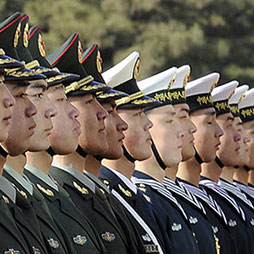ook from the People's Liberation Army Conference
The PLA as a Part of China’s Strategy in Southeast Asia
This chapter examines the contribution of the People’s Liberation Army (PLA) to China’s strategy in Southeast Asia and assesses the various means the country uses to achieve its strategic goals.
EXECUTIVE SUMMARY
MAIN ARGUMENT
The PLA is a critical component of China’s strategy in Southeast Asia. Yet when considering its role in achieving the country’s strategic goals, four arguments must be taken into account. First, China has preferred nonmilitary, including gray-zone, coercion in the South China Sea in recent years. Second, the PLA is being used in conjunction with other means of statecraft to achieve China’s goals in the region, including economic sanctions. Third, these goals concern not only military objectives such as deterrence and combat effectiveness but also broader economic and geopolitical goals. Fourth, the use of coercion, including nonmilitary coercion, and the presence of the PLA’s capabilities in Southeast Asia cut against China’s “carrots,” reducing the effectiveness of the country’s economic statecraft.
POLICY IMPLICATIONS
- China is sensitive to the geopolitical costs of military coercion in the South China Sea and remains cautious, despite the increased frequency of its use of coercion. Thus, the U.S. will send stronger signals of resolve by maintaining its military presence and making clearer statements of commitment in Southeast Asia.
- The U.S. could engage in a balancing act between signals of resolve and signals of reassurance.
- Given that China coordinates its military and nonmilitary tools, the U.S. could provide more economic incentives and alternatives to ASEAN countries.
Ketian Zhang is an Assistant Professor of International Security in the Schar School of Policy and Government at George Mason University.



